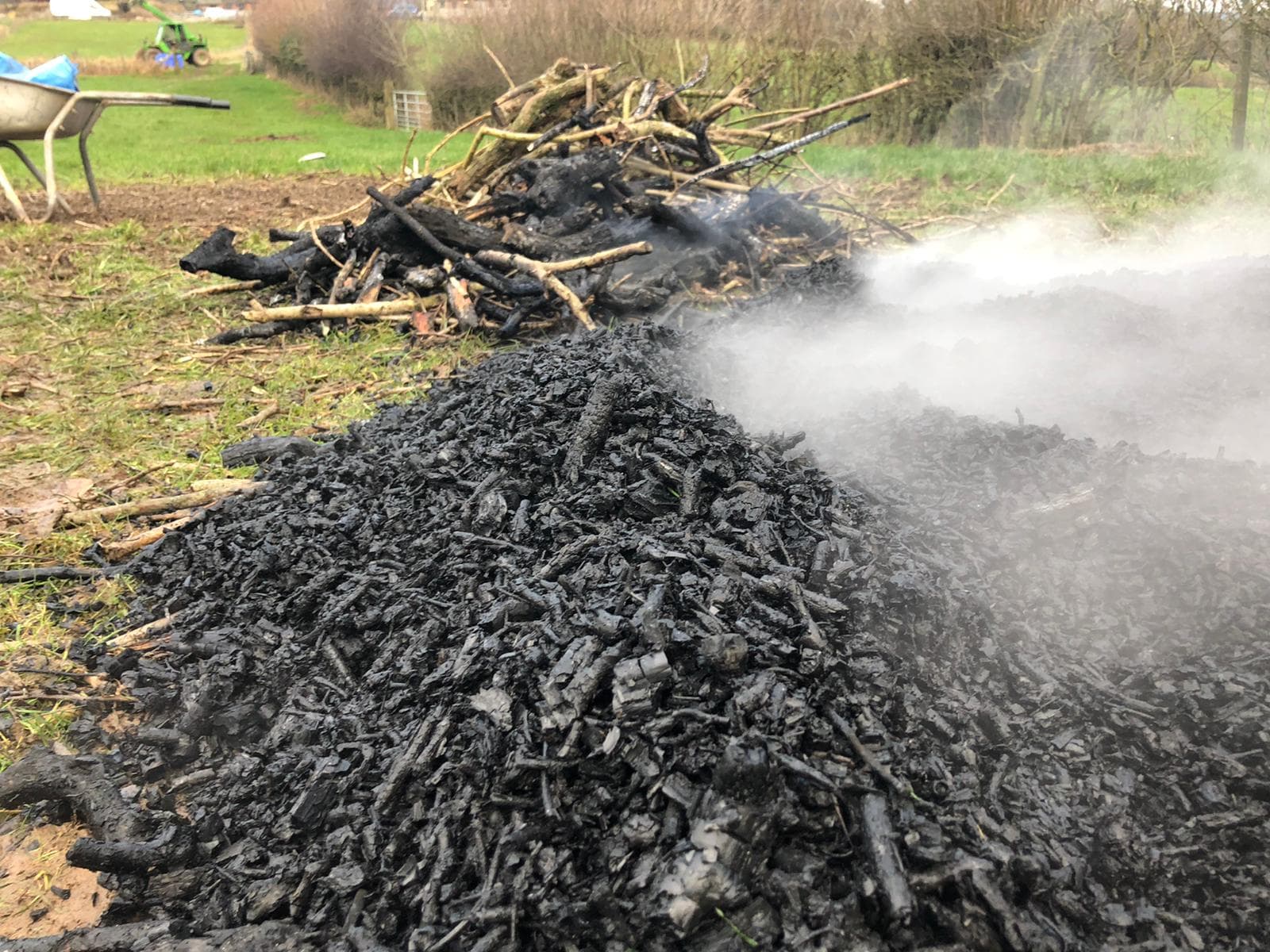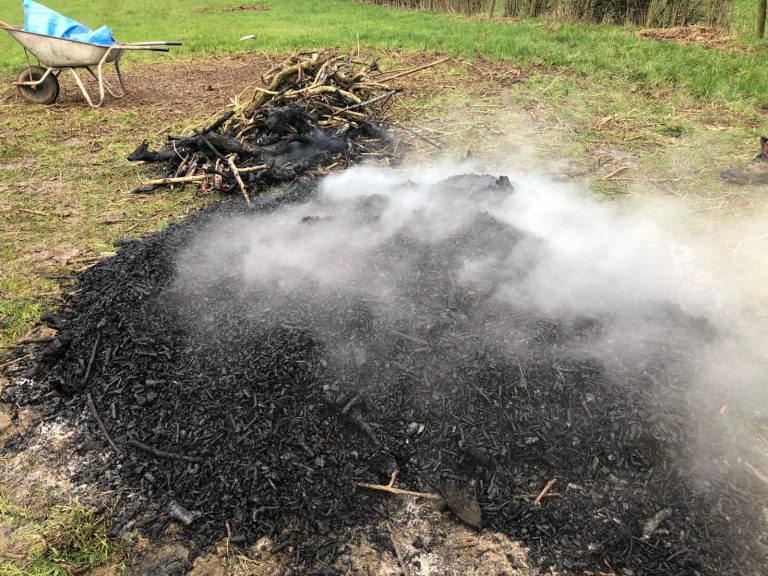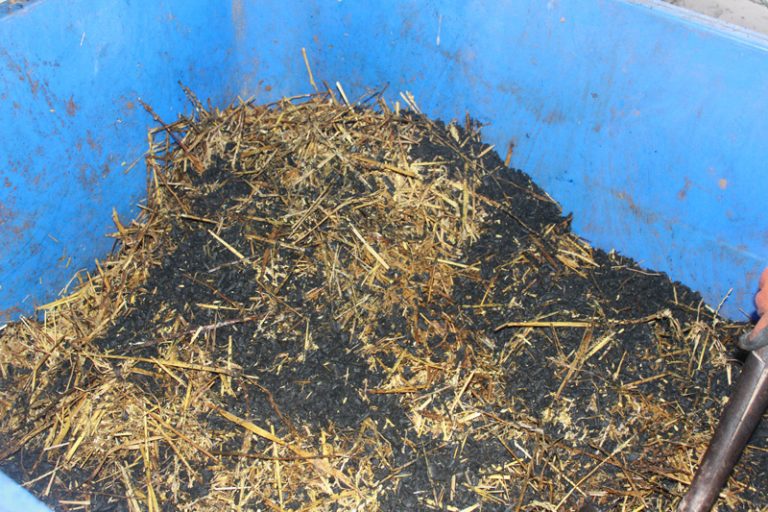
Treflach farm laid some of their hedges last winter. This created piles of brash, narrow diameter sticks and twigs that are hard to use usefully and otherwise could be seen as a waste material and be burned.
I have made biochar on a bonfire many times before, but only for a practical on a permaculture course, I have never had this much wood to play with, and never done it on this scale.
Happy to report that with our crack team of four of us we did this in a couple of hours today. We sorted the pile out between sticks and twigs. The larger diameter sticks will be the biochar feed-stock and the twigs we burnt on top, as hot and fast as you can, to release as much heat as possible. This heat pyrolizes the sticks below in the relative oxygen starved space below the burn zone of the fire. In other words the heat from the twigs burning causes the sticks below to give off highly flammable wood gas, a mix of methane and hydrogen which combusts and gives the extra heart to help complete the process.
The final trick is to extinguish the fire at exactly the right time, which is when the sticks have done their job and used up but the actual charcoal below is not burning away, you see fine white ash forming when it does and that is the time to extinguish the fire. It took 2 milk pales of water to put it out.










Albert Bates is a leading author and teacher on the subject of biochar and its applications. He demonstrated the ‘conservation burn’ technique we used in our biochar making at the International Permaculture Convergence in London in 2015.
This post has raised questions about emissions and combustion, so I am posting a couple of Albert’s videos to go a bit deeper into the subject.
Next steps, inoculating the biochar
Inspired by Albert’s experiments, we are continuing our biochar experiments at the farm. We discovered we can sieve the finished biochar through the slats of a crate, pulling most if not all of the bigger or unfinished pieces. These we fed to the pigs who gobbled them up, asked for more.
The rest of the char now need inoculating with beneficial microbes and also some NPK. We have done three batches, one we mixed with duck bedding, and two more with cow manures, again mixed with straw. The biochar is moist and now in contact with nutrients and microbes, we will leave it for a while, checking now and then so we can observe the process. We really want to get microscope next, so we can begin to really understand what is going on. I think we should get a nice compost reaction, if we dont then I suspect we might have to add more rocket fuel. We have left it to mature in an inside space, where the pigs are also housed, so it is in warmer place and wont get saturated by rain. Also as we have to feed the pigs regularly, we can check on it at the same time.
I the pictures above I added a couple of slides to show the impact of maize growing is having on soil. A late harvest in November means the soil is bare all winter, also compacted from the action of tractors. In heavy winter rain there is significant topsoil loss and soil blocking roads, drains and ditches. Different cropping patterns, more trees and hedges and the inclusion of biochar as a soil amendment could potentially address all of these issues.





